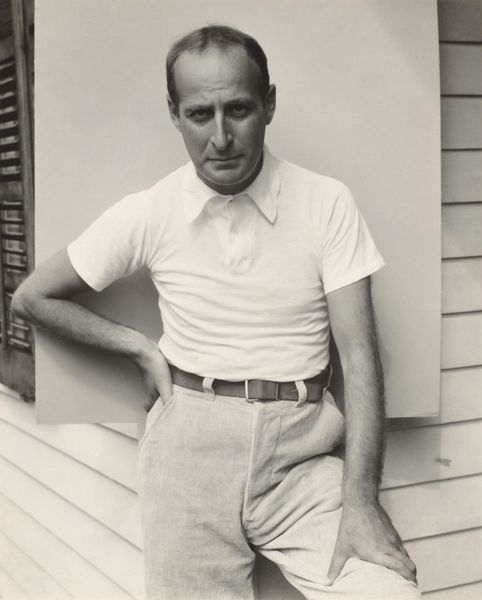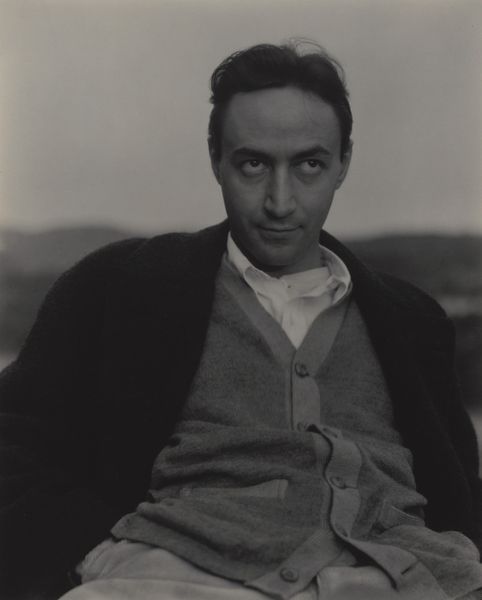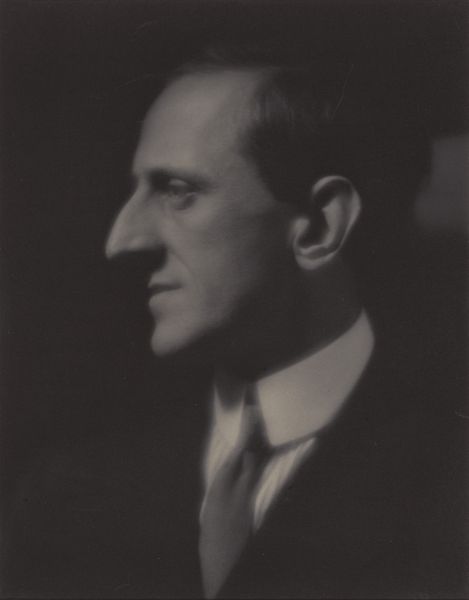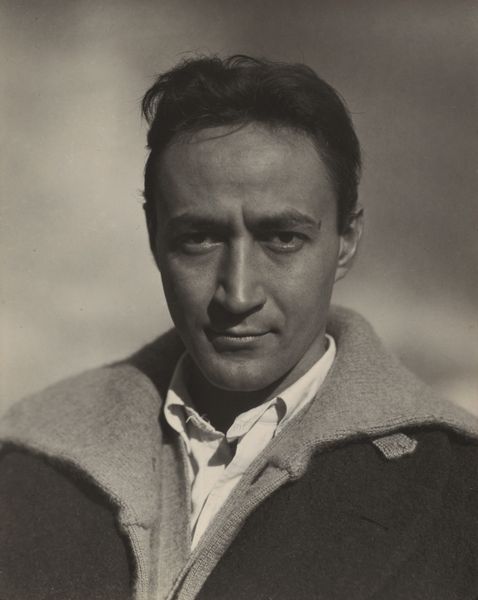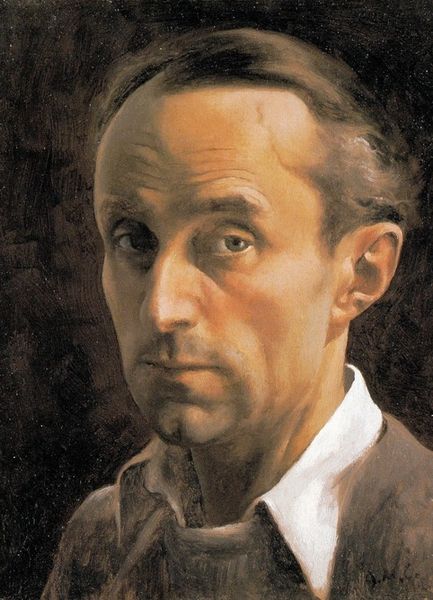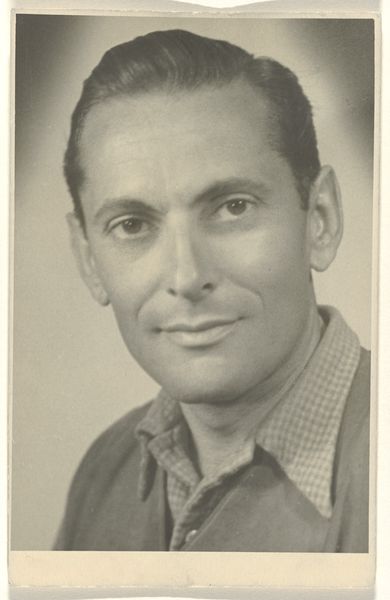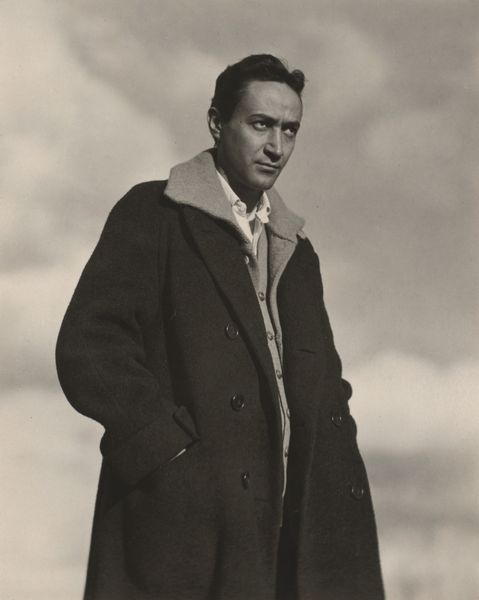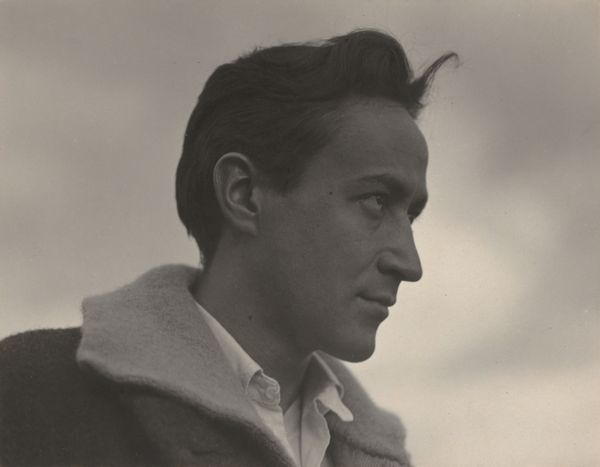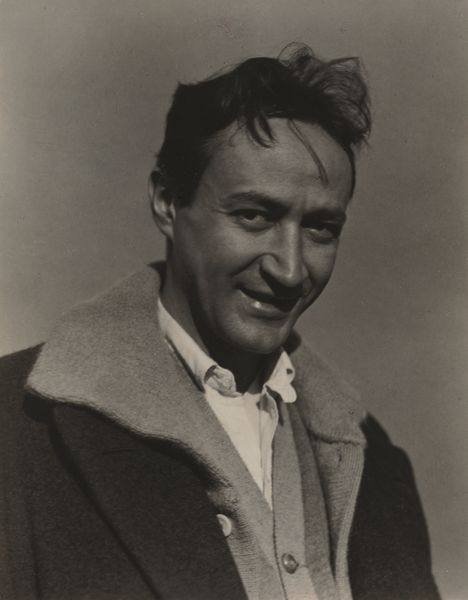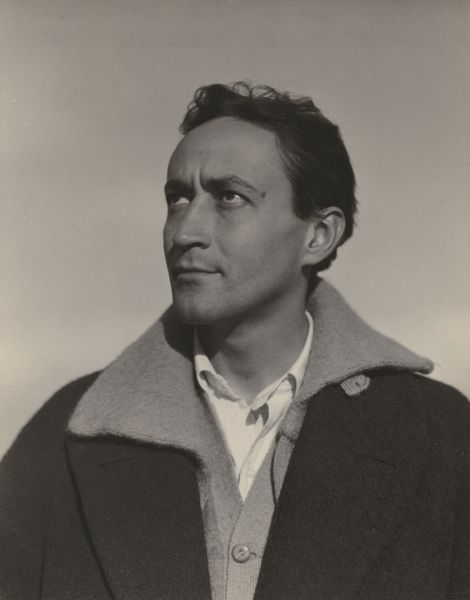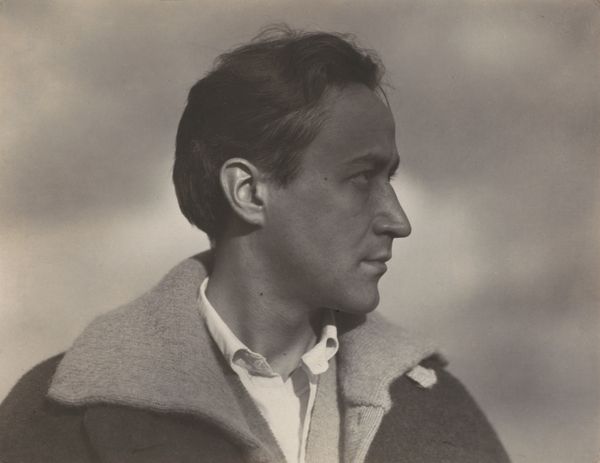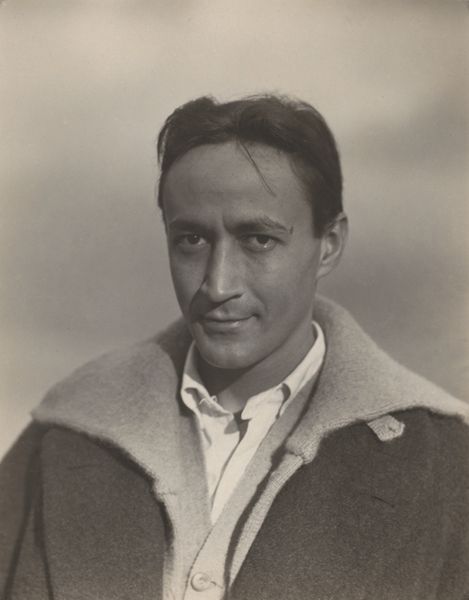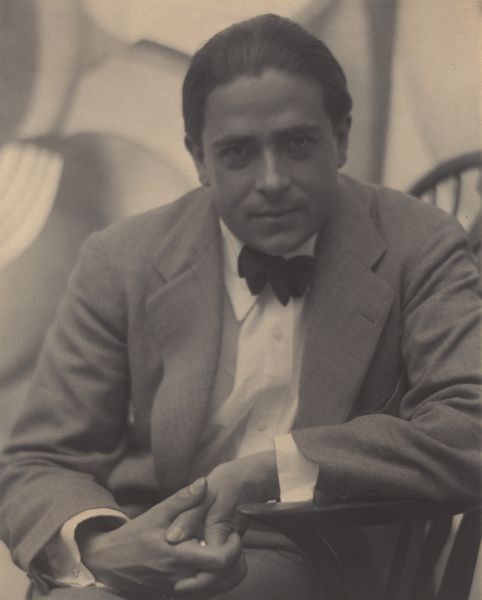
photography, gelatin-silver-print
#
portrait
#
art-deco
#
black and white format
#
photography
#
historical photography
#
black and white
#
single portrait
#
gelatin-silver-print
#
modernism
Dimensions: sheet (trimmed to image): 23.8 × 18.4 cm (9 3/8 × 7 1/4 in.) mount: 56.9 × 42.9 cm (22 3/8 × 16 7/8 in.)
Copyright: National Gallery of Art: CC0 1.0
Alfred Stieglitz captured this gelatin silver print of Louis Kalonyme. Stieglitz was a key figure in the Photo-Secession movement, advocating for photography as a fine art. This portrait exemplifies his approach. The gelatin silver printing process allowed for a wide tonal range, visible in the subtle gradations of light and shadow across Kalonyme’s face and clothing. Look at the way Stieglitz uses light to sculpt Kalonyme's features, giving the image a sculptural quality. Consider the social context: photography was still relatively new, battling for acceptance in the art world. Stieglitz championed its artistic potential through both his own practice and his promotion of other photographers. The choice of gelatin silver, a readily available and relatively inexpensive material, also democratized the medium, making artistic expression accessible to a broader range of practitioners. By elevating photography to the level of fine art, Stieglitz challenged traditional hierarchies and broadened our understanding of what constitutes art. The making and materiality of photography are central to its artistic merit.
Comments
No comments
Be the first to comment and join the conversation on the ultimate creative platform.
